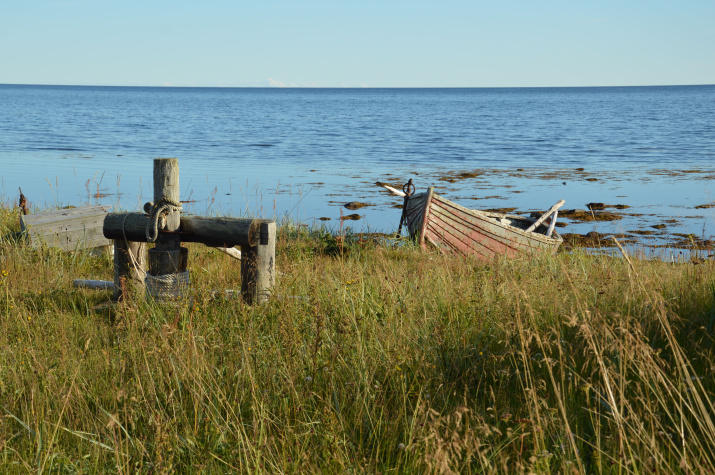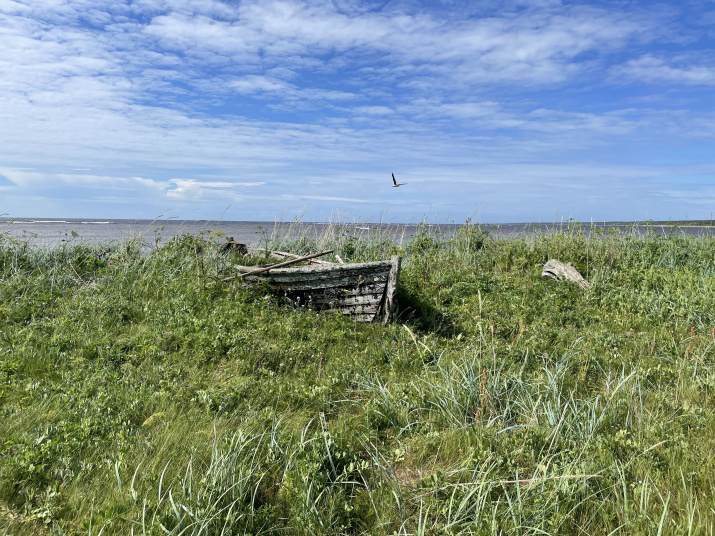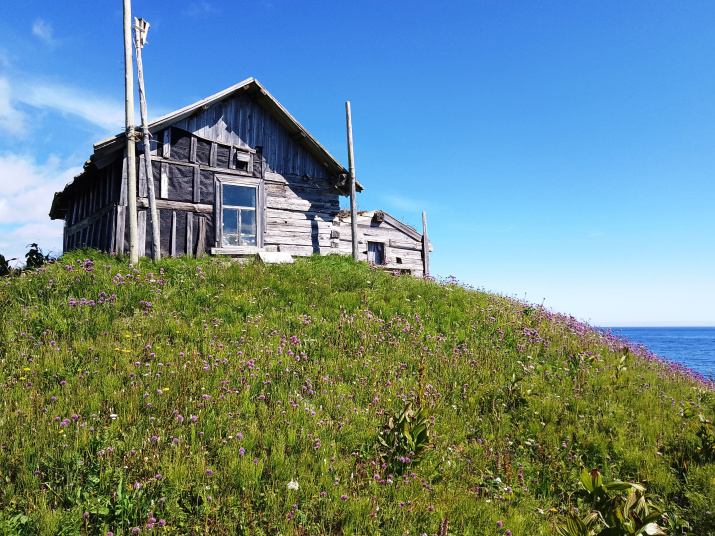On March 22, the Kola Scientific Center hosted an interdisciplinary seminar “The role of indigenous peoples and the long-term population in the formation of ecosystems of the Kola North”, dedicated to an important topic: how humans affect the natural environment around them, how it changes and how it allows you to identify traces of those who left this land long ago.
The results of the RGS project “The impact of Pomor economic activity on the history of plant settlement in the Arctic zone of the Russian Federation” were presented by Mikhail Kozhin, Evgeny Borovichev, Ksenia Popova and Natalia Kirillova. The scientists visited different parts of the Tersk coast, starting from the Umba and further to the east and northeast, to the mouth of the Ponoy River. The surroundings of Porya Bay, Kashkarantsev, Kuzreki, Chavanga and Sosnovka were examined.
The routes were planned according to the “Information on the Russian fishing”, issued in 1914 for the Department of Agriculture. In total, 420 species of vascular plants were found during the study of the flora of five Pomor villages and 98 tonyas. Six species were new to the region. Most of the alien ones were found on the Chavanga tonya. It turned out that such alien species as couch grass, common toadflax, curly plumeless thistle, common tansy, bifid hemp-nettle, cow parsley, wild spinach, white clover, and common nettle are widely distributed in fishing areas.
Mikhail Kozhin told about the Pomors who inhabited different areas of the Tersk coast, and, in addition to settlements and villages, organized tonyas – remote areas used mainly for seasonal living during fishing. By the beginning of the XX century, there were approximately more than 460 such tonyas on the Tersk coast.
Pomors not only developed the coast for the sake of economic activity, but also changed its nature. Along with people, alien plants arrived to the North. They arrived in different ways: on cart wheels or on the soles of shoes, with imported hay to feed livestock, as seed weeds for sowing, even in the form of food waste. For example, spotted St. Johnswort was first discovered in the meadows near Umba in the middle of the XIX century. Its seeds were probably brought there with hay, while bidens radiata was most likely brought by storms. The cow parsley got to the Tersk coast clinging to the clothes of the settlers and the fur of their animals. Local species of the Murmansk region, fireweeds, forms thickets only in "disturbed" areas, for example: in abandoned fields and settlements.
The project participants recorded four thousand observations of the locations of vascular plants, made 234 complete geobotanical descriptions, collected more than a thousand herbarium samples – they were transferred for storage to the Polar-Alpine Botanical Garden-Institute, the Institute of North Industrial Ecology Problems and the Moscow State University named after M.V. Lomonosov.
Ksenia Popova clearly showed in her report how the tonya areas look today: they can often be determined only by the abandoned fishing devices under which or next to which new plant communities are formed. Natalia Kirillova introduced the audience to the peculiarities of the vegetation cover of the tonal sections of the eastern part of the Tersk coast, which is the most remote and inaccessible. Scientists have traveled more than a hundred kilometers, 28 tonyas have been surveyed.
Evgeny Borovichev spoke about the protected plant species of the Murmansk region in the areas of the Pomor activities. Among the most valuable finds, a very rare Arctic plant stands out, Helianthemum arcticum. It was previously considered to grow only on Turi Cape. In the framework of a project supported by the Russian Geographical Society, Ksenia Popova and Anna Razumovskaya discovered it in other places, too. Such discoveries give an idea on the post-glacial development of our region.
Answering colleagues' questions about the practical benefits of research, Mikhail Kozhin stressed: this information is important from a botanical, environmental, and historical point of view, as well as for the development of the tourism industry of the region. After all, it is possible to pave a new path along the Kola, following the old Pomor one, and show the harmony of the coexistence of man and nature.
As part of the project, a brochure was prepared. It is called “How Pomors influenced the settlement of plants on the Tersk coast of the White Sea".
Video about the project: https://youtu.be/UxsrReQL5c0






